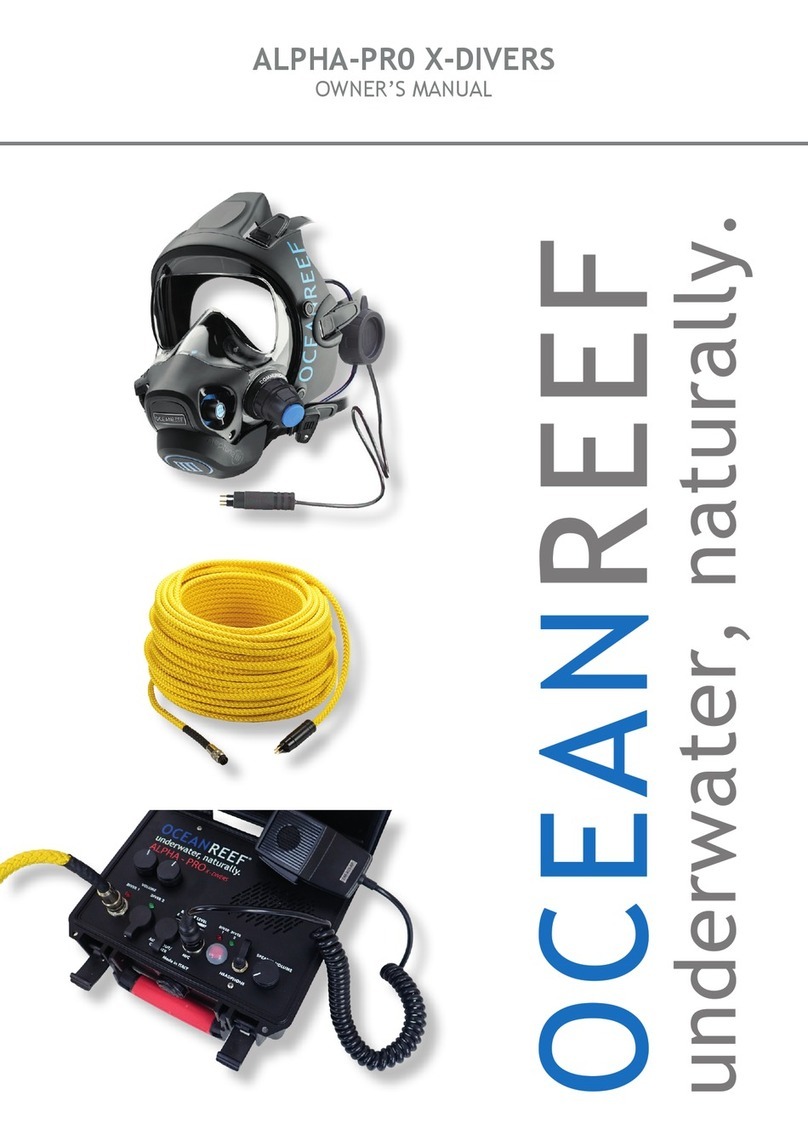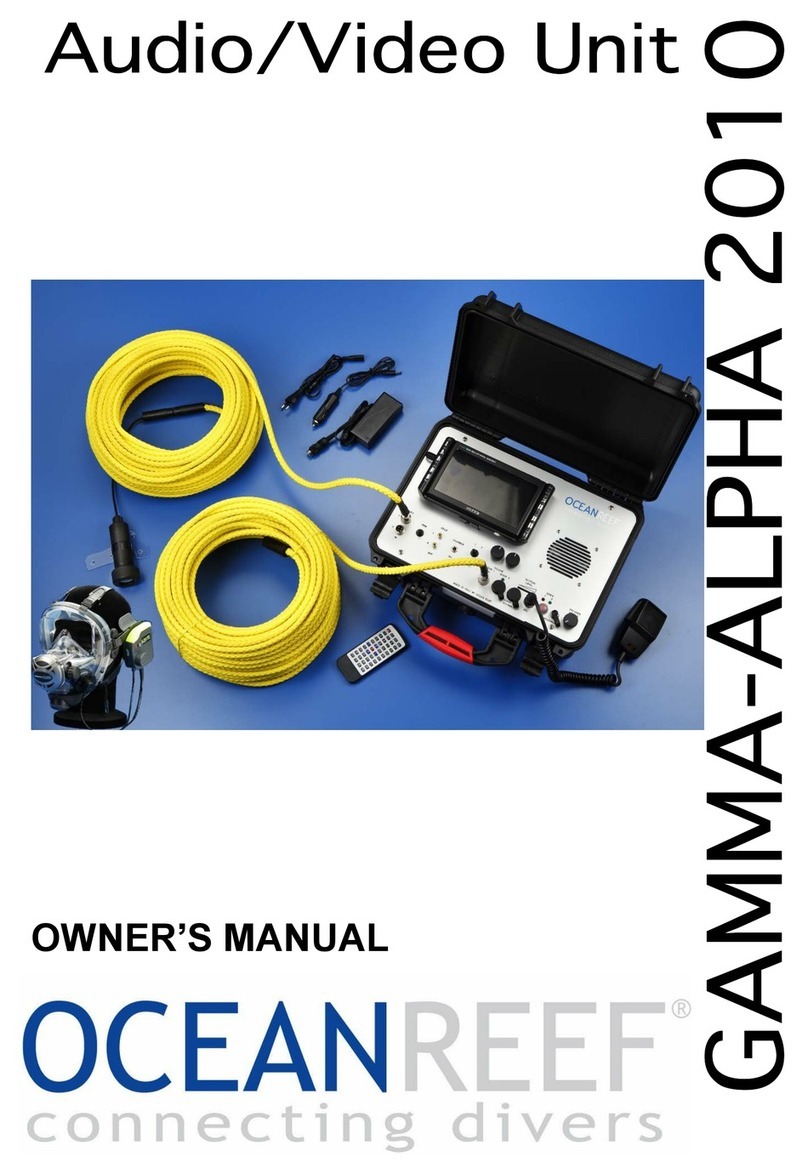
4
G.divers Communication Units Owner’s Manual
Note
When breathing out (exhaling), reduce the emission of bubbles as far as
possible (WITHOUT STOPPING EXHALING WHEN RESURFACING). Bubbles
cause noise or ultrasonic base signals.
Note
It is normal to receive a background signal like clutter. Movement of sand and
pebbles on the seabed, marine motors, cetaceans, and other sources can
create vibrations in the water that give rise to a range of ultrasonic waves that
can be picked up by the GSMTM or the M101A.
Note
When using the device in shallow water, you may experience difculty
communicating because:
1. The surface is full of air bubbles formed by the waves.
2. The sand under water is causing ultrasonic noise due to the waves.
For more extended information:
www.oceanreefgroup.com
M101A G.DIVERS RECEIVER UNIT
1. TECHNICAL CHARACTERISTICS
Strap slot
Battery housing
On/Off wet
contacts
Speaker
Antenna
Antenna
Main parts of the unit are:
• Battery housing: inside the battery housing there is a label with the serial
number and the polarity to insert the battery. Battery should be a 9volt alkaline
one, rechargeable batteries will last shorter. The autonomy with the alkaline
battery (receiving mode) is around 30 hours with 30 minutes of low battery
alarm (one “beep” every 30 seconds)starting when voltage goes below 6.8volt.
• Antenna: it is a ceramic one, made to receive ultrasound to a frequency of 32.768 kHz.
• Wet contact screws: the unit is turning automatically on when it is submerged
into the water, to perform a dry test is possible to turn it on using the fingers.
• Speaker: it is ceramic one covered with a special silicon resin, it is designed to
work underwater so the best quality is achieved when the unit is submerged.
• Slot for inserting the goggles strap.
• Depth of operation within the recommendation of training agencies.
2. ATTACHING THE UW UNIT TO
A CONVENTIONAL MASK.
Connect the M101A G.divers to the left or right side of the goggle strap as indicated
below. Make sure that the strap sits entirely inside the strap housing on the receiving
unit. Check that the M101A G.divers slides freely on the strap.
3. CHECKING BEFORE USE
Once the battery has been installed and you have checked that the cap and cover have
been closed properly, dampen your fingers and touch the two screws (On/Off switch
contacts) and activate the polarity circuit. You will hear a “beep” indicating activation.
Run another finger along the antenna. You will hear a “zzzzzz” type sound coming from
the speaker.
Try to bring the antenna transducer near the antenna on a M100 G.divers unit, or the
antenna on a GSM G.divers unit (about 5 cm / 2 inches), keeping your fingers on the
On/Off contacts. You should also be able to hear the communication when the unit is
not immersed in water.
If you hear a repeated “beep” (about every 30 seconds) this means that the battery is
running low. Change it.
4. BASIC INSTRUCTIONS FOR
UNDERWATER COMMUNICATION
The M101A G.divers is activated for reception as soon as it is immersed in water, and it
turns off a few seconds after it dries out.
When it’s switched on, this is confirmed by a “beep”.
When a message is incoming from your buddy or from the surface you’ll hear the “beep”
that anticipate the transmission, breath slowly to avoid bubbles to disturb communication.
Note
Talking and listening while underwater requires practice. With experience,
divers will become more procient in the use of the communications system.
Note
Speak slowly, and pronounce each word clearly. Only speak after having sent a
call impulse by pressing the button on the microphone. It is advisable to practice
in a swimming pool before using the device in open water.
Note
Bubbles, and especially, small air bubbles, that are in contact with or near
those communicating reduce the transmitting power. When using the unit in
swimming pools or in highly oxygenated water, coat your antenna in silicone
lubricant. This will make it more difcult for the air bubbles to adhere to it.
Note
Obstacles such as rocks may reduce your communication range.
Note
When breathing out (exhaling), reduce the emission of bubbles as far as
possible (WITHOUT STOPPING EXHALING WHEN RESURFACING). Bubbles
cause noise or ultrasonic base signals.
Note
It is normal to receive a background signal like clutter. Movement of sand and
pebbles on the seabed, marine motors, cetaceans, and other sources can
create vibrations in the water that give rise to a range of ultrasonic waves that
can be picked up by the GSMTM or the M101A.






























